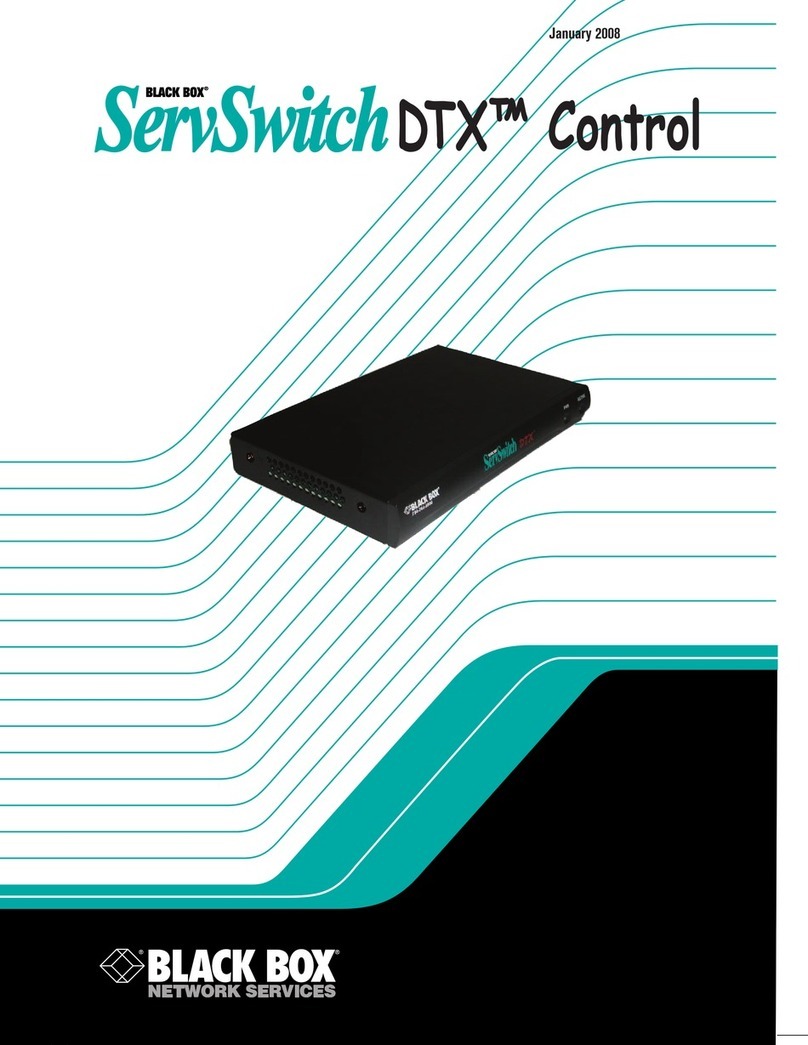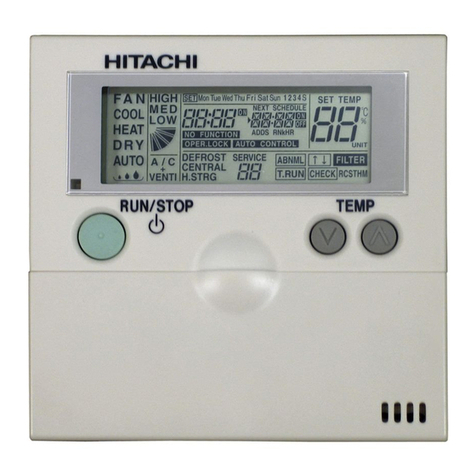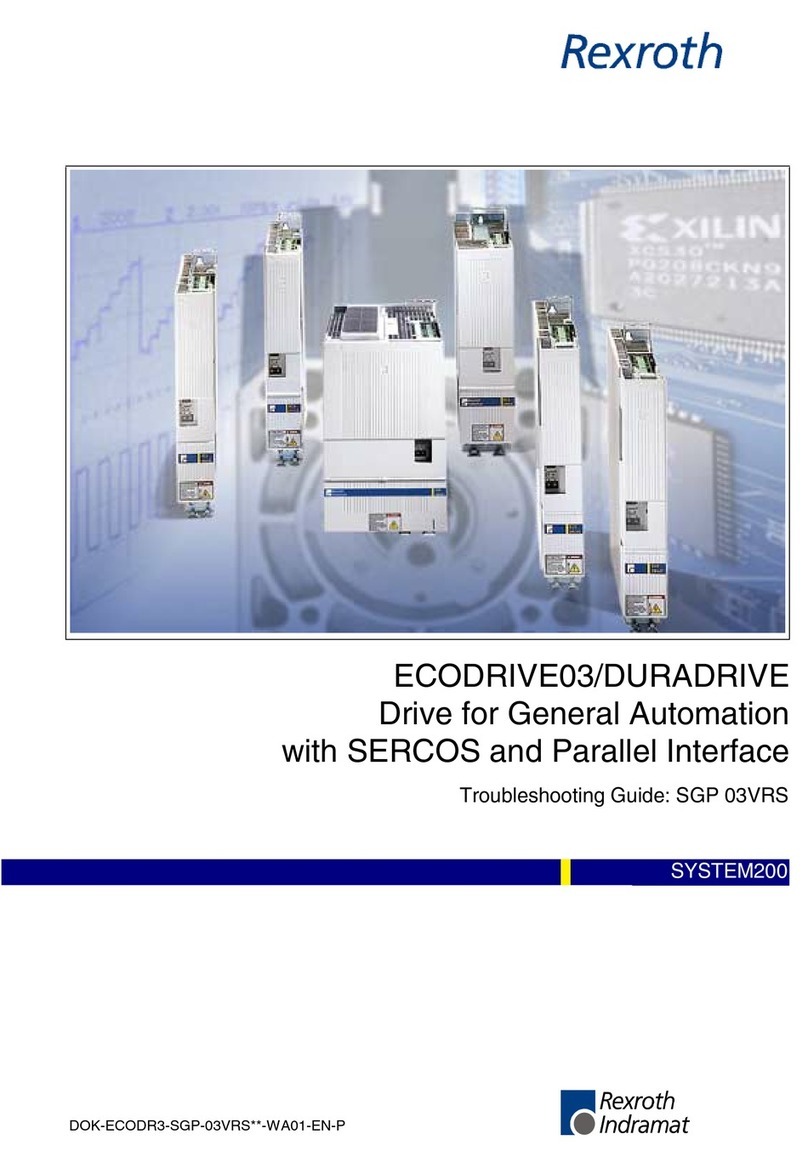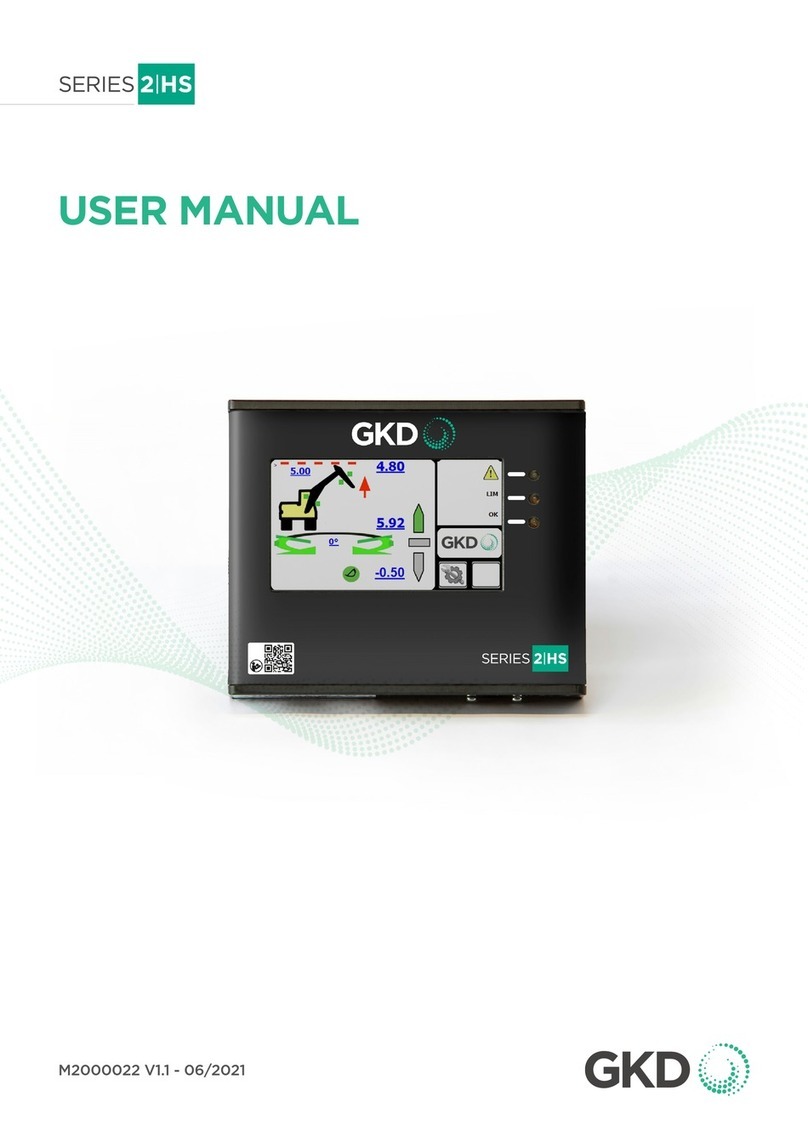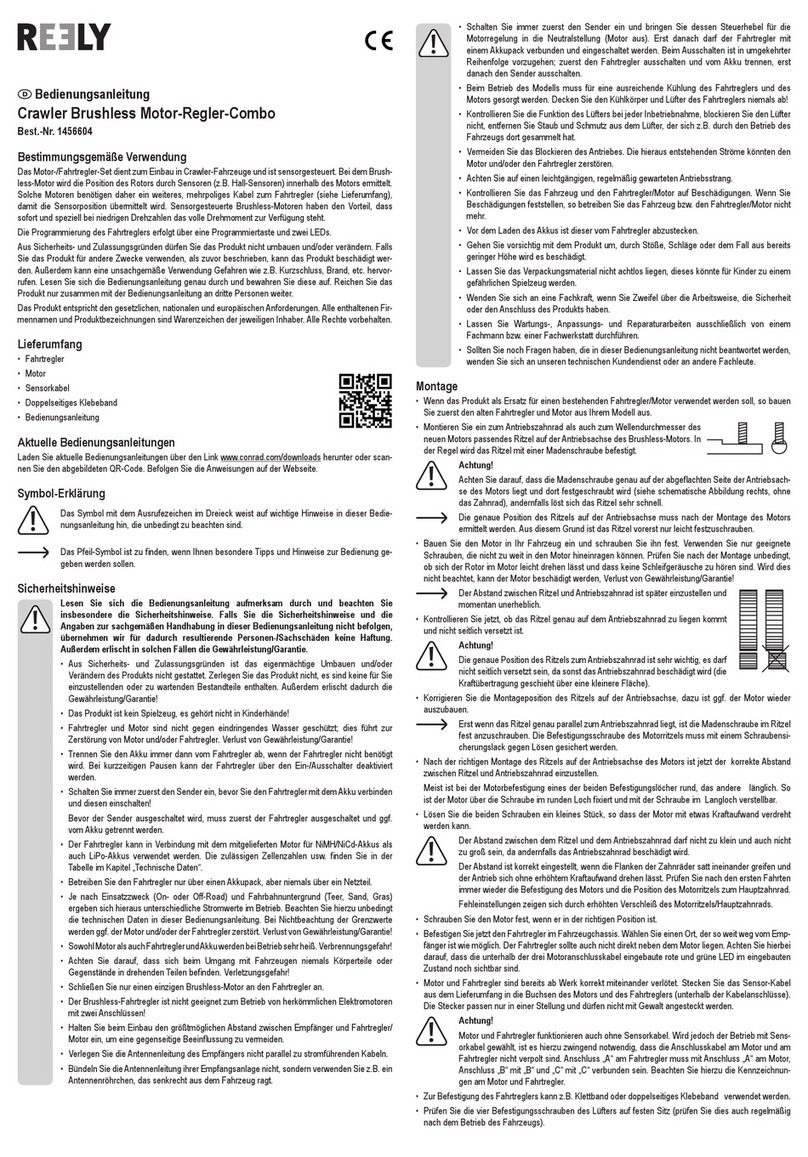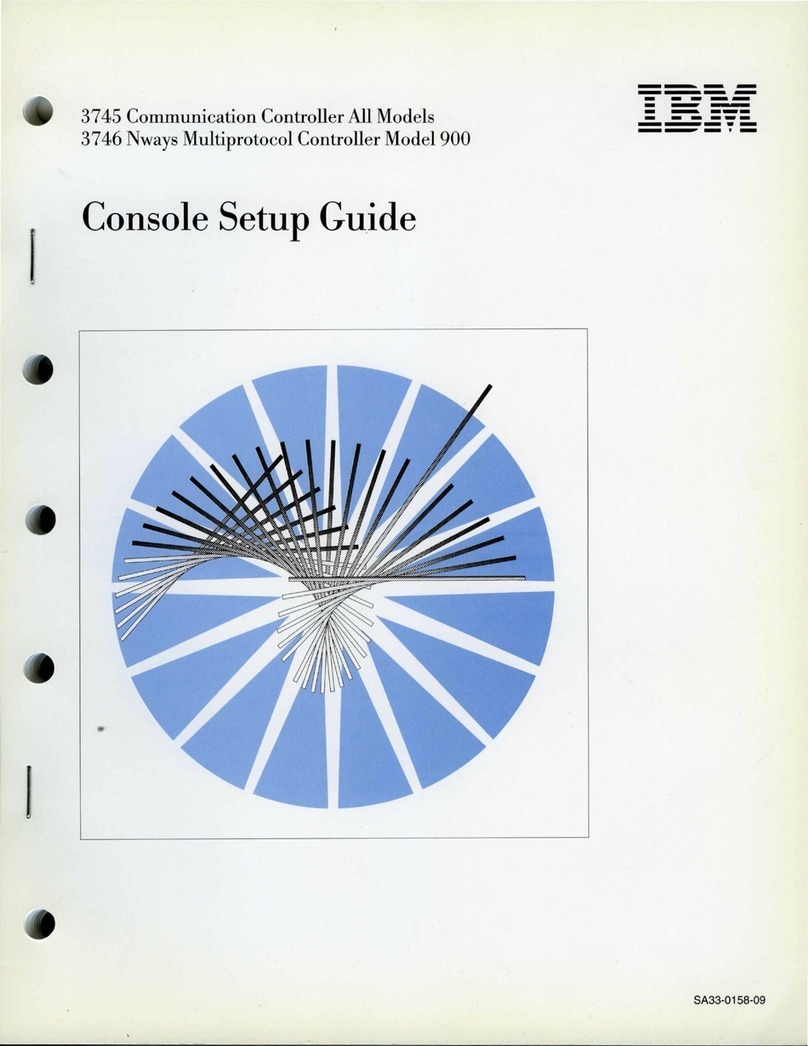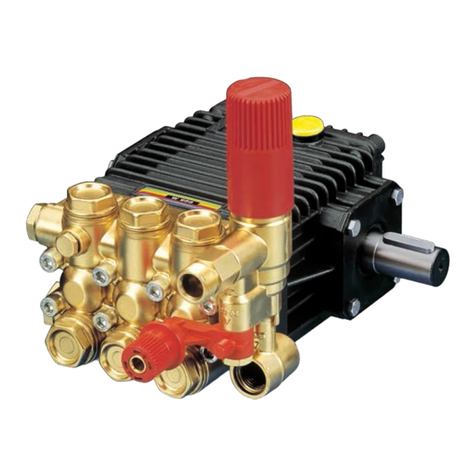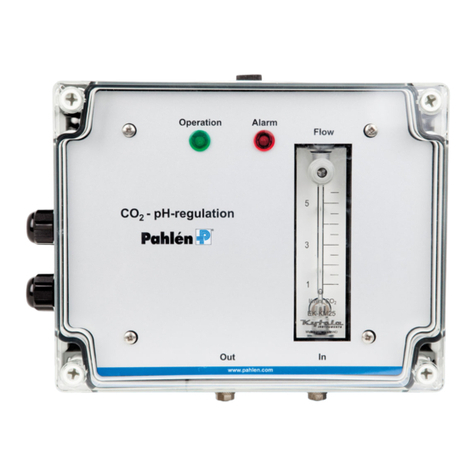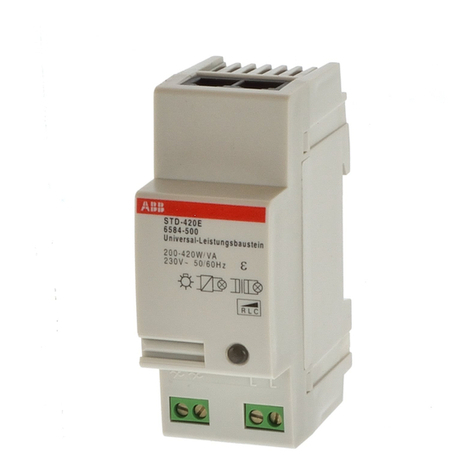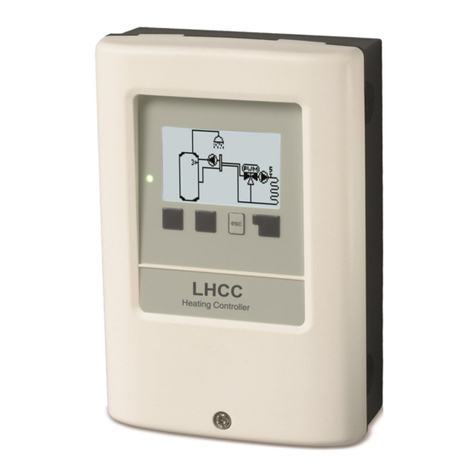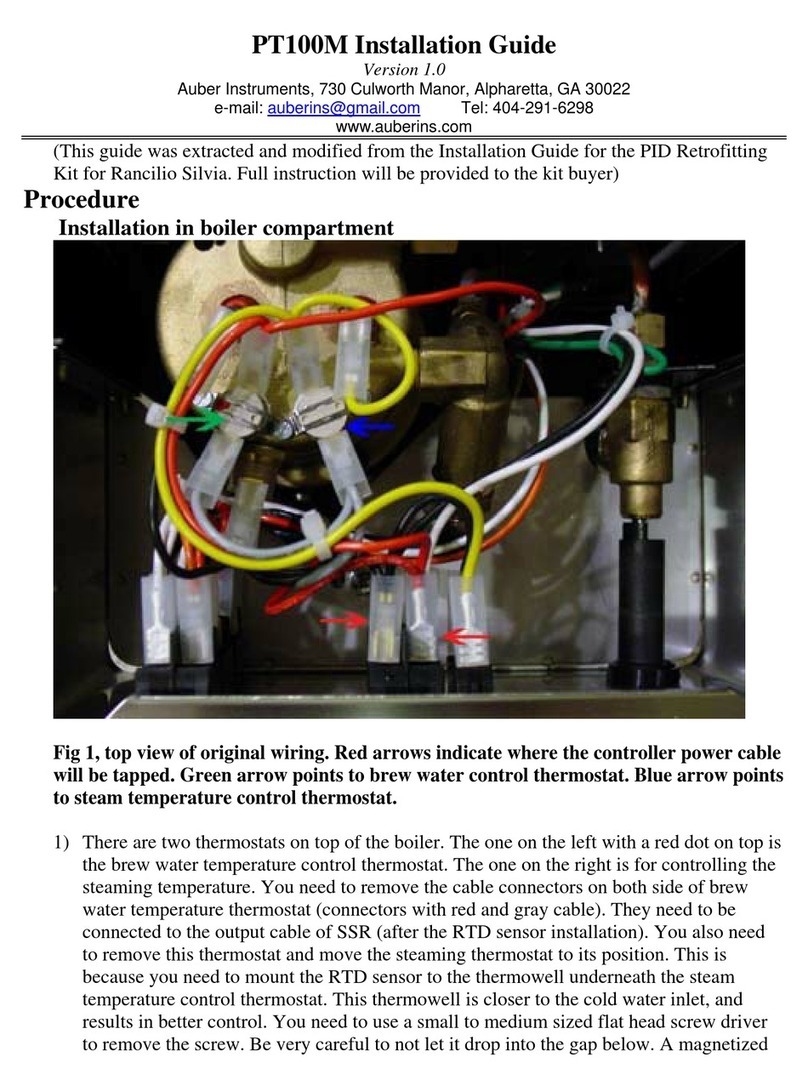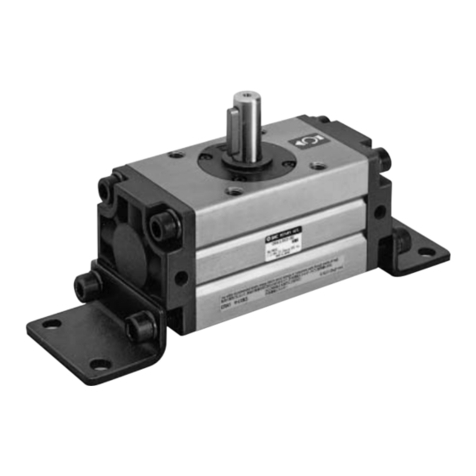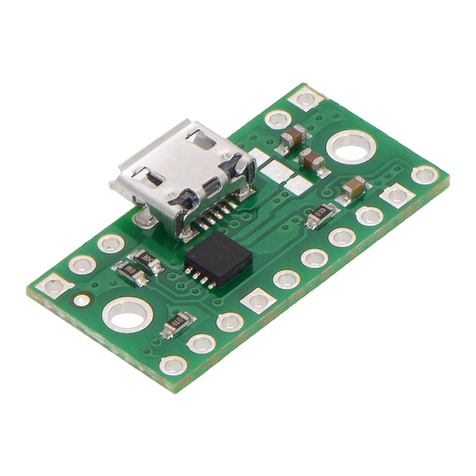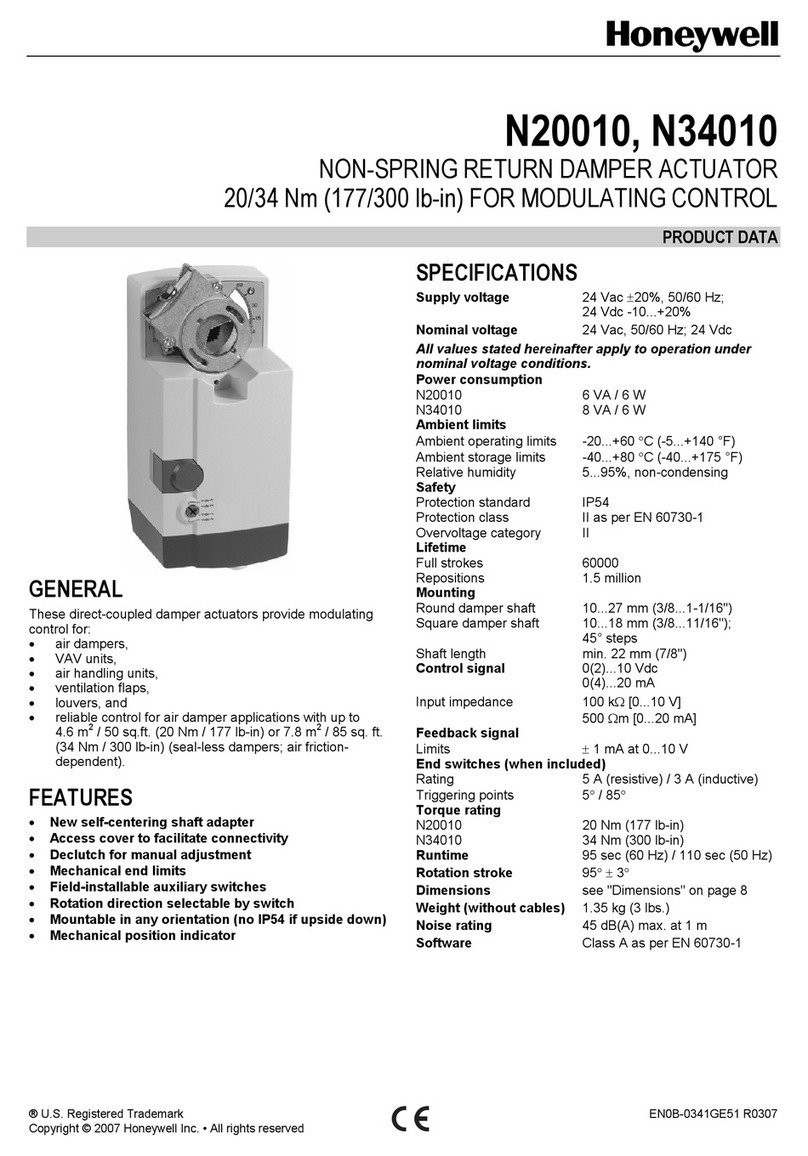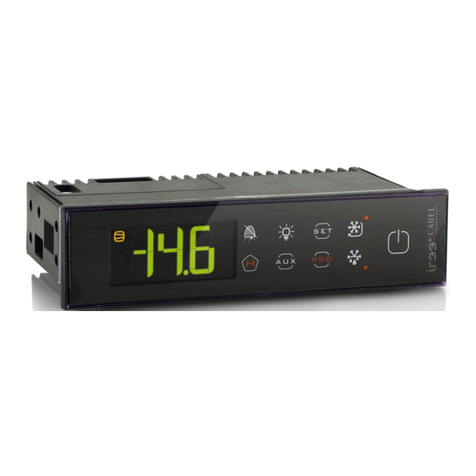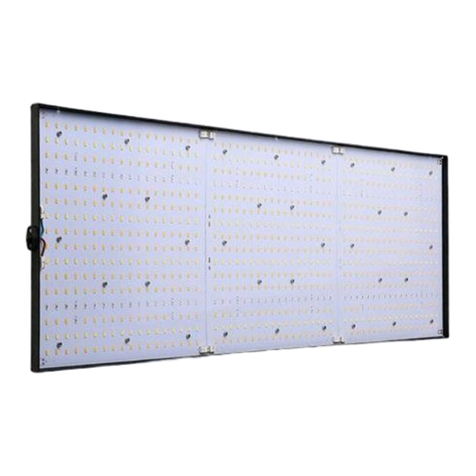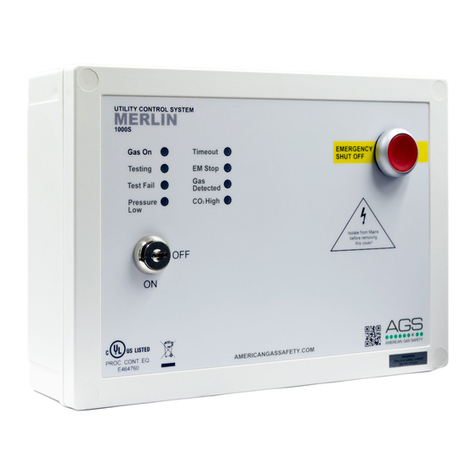Black Box 3174/3274 I-Mux Series User manual

Order toll-free in the U.S. 24 hours, 7 A.M. Monday to midnight Friday: 877-877-BBOX
FREE technical support, 24 hours a day, 7 days a week: Call 724-746-5500 or fax 724-746-0746
Mail order: Black Box Corporation, 1000 Park Drive, Lawrence, PA 15055-1018
CUSTOMER
SUPPORT
INFORMATION
FEBRUARY 1993
MX330A-C
MX330A-D
3174/3274 I-Mux
POWER TX RX TX RX ERR DATA ERR DATA ERR DATA DATAERR ERR DATA
FIBER OPTIC COPPER
LINK MUX PORT
3174/3274 I-MUX
0123
POWER TX RX TX RX DATA D ATA DATA D ATA DATA
FIBER OPTIC COPPER
LINK CONTROLLER PORT
3174/3274 I-MUX
0123

TRADEMARKS
1
TRADEMARKS
ST®is a registered trademark of AT&T.
IBM®is a registered trademark of IBM Corporation.
Any other trademarks mentioned in this manual are acknowledged to be the property of the trademark owners.

3174/3274 I-MUX
2
FEDERAL COMMUNICATIONS COMMISSION
AND
INDUSTRY CANADA
RADIO FREQUENCY INTERFERENCE STATEMENT
This equipment generates, uses, and can radiate radio frequency energy and if not installed an used
properly, that is, in strict accordance with the manufacturer's instructions, may cause interference to
radio communication. It has been tested and found to comply with the limits for a Class A computing
device in accordance with the specifications in Subpart J of Part 15 of FCC Rules, which are designed to
provide reasonable protection against such interference when the equipment is operated in a commercial
environment. Operation of this equipment in a residential area is likely to cause interference, in which
case the user at his own expense will be required to take whatever measures may be required to correct
the interference.
Changes or modifications not expressly approved by the party responsible for compliance could void
the user's authority to operate the equipment.
This digital apparatus does not exceed the Class A limits for Radio noise emission from digital apparatus set out
in the Radio Interference Regulation of Industry Canada.
Le présent appareil numérique n'émet pas de bruits radioélectriques dépassant les limites applicables aux appareils
numériques de la classe A prescrites dans le Règlement sur le brouillage radioélectrique édicté par Industrie Canada.

3174/3274 I-MUX
3
CONTENTS
1. SPECIFICATIONS .......................................................................................................................................4
2. INTRODUCTION .......................................................................................................................................5
2.1 General Description ........................................................................................................................5
2.2 Features............................................................................................................................................6
2.3 Applications .....................................................................................................................................6
2.4 Controller-to-Terminal Distance Limitations.................................................................................9
2.4.1 Delay Calculations for Configuration 1.............................................................................9
2.4.2 Delay Calculations for Configuration 2...........................................................................10
3. INSTALLATION ........................................................................................................................................11
3.1 Connection to the Controller.......................................................................................................11
3.2 Fiberoptic Connection (Configuration 1 Only)..........................................................................11
3.3 Copper Connection ......................................................................................................................11
3.3.1 Copper Connection for Configuration 1 ........................................................................11
3.3.2 Copper Connection for Configuration 2 ........................................................................11
3.4 Slide Switch Setting .......................................................................................................................11
3.5 Connecting to a Power Source .....................................................................................................12
4. OPERATION ...........................................................................................................................................13
5. TROUBLESHOOTING.............................................................................................................................17
5.1 Configuration 1 .............................................................................................................................17
5.1.1 General Malfunctions.......................................................................................................17
5.1.2 Fiberoptic and Copper Connection Between the MX330A-C and MX330A-D ............17
5.1.3 Fiberoptic Connection Between the MX330A-C and MX330A-D .................................18
5.1.4 Copper Connection Between the MX330A-C and MX330A-D......................................18
5.2 Configuration 2 .............................................................................................................................18

3174/3274 I-MUX
4
User Channels — 32
Speed — 2.3587 Mbps
Data Format — 3174/3274
Maximum Distance — Fiberoptic: 1.9 miles (3 km); Copper: Coax: 0.9 miles (1.5 km),
Type 1: 0.7 miles (1.2 km)
Indicators— MX330A-C: (5) LEDs: Power, F/O TX, F/O RX, (1) DATA on the
Link side, (1) DATA on the Controller Side
MX330A-D: (7) LEDs: Power, F/O TX, F/O RX, (1) ERR and (1) DATA
on the Link side; (1) ERR and (1) DATA on the Mux port
Connectors — Channel: DPC, female
Composite: Copper, DPC female; Optical, ST®
Power — 105 to 250 VAC, 20 W max, 47 to 63 Hz
Size — 1.7"H x 19"W x 5.7"D (4.4 x 48.3 x 14.4 cm)
Weight — 4.2 lb. (1.9 kg)
1. Specifications

CHAPTER 2: Introduction
5
2.1 General Description
The 3174/3274 I-Muxes are 19-inch rack -
mountable units designed for used with IBM®
3174 and IBM 3274 32-port cluster controllers.
The Controller Side Mux accepts up to four IBM
3174 or 3274 RPQ coaxial lines, each carrying an
eight-to-one multiplexed signal. This Mux provides
a single multiplexed output on fiberoptic, coax, or
twisted-pair cable. That output can be recovered for
a total of up to 32 terminal signals. Figure 2-1 shows
the Controller Side Mux (MX330A-C).
The Device Side Mux works in conjunction with the
Controller Side Mux. It receives a single multiplexed
output on fiberoptic, coax, or twisted-pair cable and
provides one-to-four demultiplexing to recover up
to four IBM 3174 or 3274 multiplexed lines carrying
a total of up to 32 terminal signals. Figure 2-2 shows
the Device Side Mux.
2. Introduction
POWER TX RX TX RX DATA D ATA DATA D ATA DATA
FIBER OPTIC COPPER
LINK CONTROLLER PORT
3174/3274 I-MUX
(Controller Side)
0123
POWER TX RX TX RX ERR DATA ERR DATA ERR DATA DATA
ERR ERR DATA
FIBER OPTIC COPPER
LINK MUX PORT
3174/3274 I-MUX
(Device Side)
0123
Figure 2-1. Controller Side Mux (MX330A-C).
Figure 2-2. Device Side Mux (MX330A-D).

3174/3274 I-MUX
6
2.2 Features
Here's what you can expect from both Muxes:
• Both units are designed for use with IBM 3174
and IBM 3274 controllers (with the RPQ 9901
connection option). The Controller Side Mux
will accept up to four IBM 3174 or 3274 RPQ
9901 coaxial lines.
• Both units are fully compatible with the 3299
protocol and 3270 terminals.
• When used together, the Muxes can extend
transmission distance for IBM controllers to
3270 terminals up to about 4.7 miles (7.5 km)
(subject to polling and timing limitations).
• Both units are based on advanced VLSI
technology and offer high reliability, low power
consumption, and synchronous operation
through an independent clock. In addition to
the multiplexor functions, they provide data
signal reclocking, regeneration, and jitter
attenuation.
• When the Muxes are configured for fiberoptic
input/output, copper cable can be connected
(coax or Type 1), to provide a cold backup line.
A slide switch on the rear panel selects
fiberoptic or copper mode.
• Built-in baluns provide impedance matching
when different cable types are used (coax
[93 ohm] or Type 1, 2, 6, or 9 [150 ohm]).
• No operator intervention is required during
normal operation. The LEDs on the front panel
provide diagnostic indications for each port.
2.3 Applications
The Contrller Side Mux (MX330A-C) can be used
in two basic configurations. The Device Side Mux
(MX330A-D) can be used only in conjunction with
the MX330A-C.
Configuration 1:
In this configuration, the MX330A-C is used with
the MX330A-D and eight-port multiplexors. The
MX330A-C and MX330A-D are connected by
fiberoptic cable. A coaxial or twisted-pair cable
(Type 1, 2, 6, or 9) can be connected instead of
the fiberoptic cable or as a cold backup line. The
MX330A-C accepts up to four 3174 or 3274 coaxial
lines and combines them into a single multiplexed
output on fiberoptic, coax or twisted-pair cable. The
MX330A-D provides one-to-four demultiplexing.
Each line is connected to an
8-port multiplexer.
This configuration allows a maximum total distance
between controller and device of 7.5 km (see
Figure 2-3). To extend drive distance, an additional
multiplexor can be connected between the
MX330A-C and MX330A-D.
NOTE
Maximum distance is subject to
controller timeout. For maximum
distance calculations, see Section
2.4.1.

CHAPTER 2: Introduction
7
MX330A-C
3174
Controller
or
3274
(with RPQ 9901)
MX330A-D
Copper
F/O
0 - 7
8 - 15
16 - 23
24 - 31
0 - 7
8 - 15
16 - 23
24 - 31
0
1
7
0
1
7
8-Port
Multiplexer
8-Port
Multiplexer
Figure 2-3. Configuration 1 Using the MX330A-C and MX330A-D.
7.5 km

3174/3274 I-MUX
8
Configuration 2:
This configuration consists of the MX330A-C
and an IBM 3299/32 thirty-two port terminal
multiplexor connected by a coaxial or twisted-pair
cable (Type 1, 2, 6, or 9).
NOTE
This configuration does not support
fiberoptic connection.
The MX330A-C accepts up to four 3174 or 3274
coaxial lines and combines them into a single
multiplexed output on coax or twisted-pair cable.
This output is received by the IBM 3299/32, which
provides 1-to-32 demultiplexing. Each port is
connected to a device.
This configuration allows a maximum total distance
between controller and device of about 2.8 miles
(4.5 km)—see Figure 2-4.
NOTE
Maximum distance is subject to
controller timeout. For maximum
distance calculations, refer Section
2.4.2.
MX330A-C
3174
Controller
or
3274
(with RPQ 9901)
Copper
0 - 7
8 - 15
16 - 23
24 - 31
0
31
IBM
3299/32
Multiplexer
Figure 2-4. Configuration 2 Using the MX330A-C.

CHAPTER 2: Introduction
9
2.4 Controller-to-Terminal Distance Limitations
The IBM controller has a timeout value after trans-
mitting a message to a terminal. If the response
from the terminal is not received within this
timeout, the controller ignores it and sends the
message to the next terminal.
2.4.1 DELAY CALCULATIONS FOR CONFIGURATION 1
The round-trip propagation time is equal to twice
the time it takes the signal to travel from the
controller (Tc) through segments X1, X2, X3,
and X4, and through multiplexers T1, T2, and T3,
plus terminal response time (see Figure 2-5).
Maximum cable length is calculated as follows:
X1+X2+X3+X4 = [Controller Timeout-
(Tc+T1+T2+T3+Terminal Delay)] x Signal
Propagation ÷ 2.
When:
Controller Timeout = 3174 - 50 µsec
3274 - 56 µsec
Data Rate = 424 nsec/bit
Tc(Controller Delay Time =
3174 - 3.5µsec (8-bit start sequence)
3274 - 24µsec (24-bit + 32-bit data stream)
T1 (MX330A-C Delay time) =
8-bit inbound, 8-bit outbound (6.78 µsec)
T2 (MX330A-D Delay time) =
16-bit inbound, 8-bit outbound (10.1 µsec)
T3 (Multiplexor Delay time) =
16-bit inbound, 8-bit outbound (10.1 µsec)
Terminal Delay (IBM max.) = 5.5 µsec.
Signal Propagation = 200 m/µsec
Applications using cable exceeding the maximum
calculated length require changing the controller
timeout. Timeout can be increased to 98 µsec or
200 µsec using an RPQ diskette, which can be
ordered from IBM.
MX330A-C
3174
Controller
or
3274
(with RPQ 9901)
MX330A-D
Copper
F/O
0 - 7
8 - 15
16 - 23
24 - 31
0 - 7
8 - 15
16 - 23
24 - 31
0
1
7
0
1
7
8-Port
Multiplexer
8-Port
Multiplexer
TXT X TX T
c11 2 2 43X
3
Figure 2-5. Delay Calculations for Configuration 1.

3174/3274 I-MUX
10
2.4.2 DELAY CALCULATIONS FOR CONFIGURATION 2
The round-trip propagation time is equal to twice
the time it takes the signal to travel from the
controller (Tc) through segments X1, X2, and X3,
and through multiplexers T1 and T2, plus terminal
response time (see Figure 2-6).
Maximum cable length is calculated as follows:
X1+X2+X3 = [Controller Timeout -(Tc+T1+T2+
Terminal Delay)] x Signal Propagation ÷ 2.
When:
Controller Timeout = 3174 - 50 µsec
3274 - 56 µsec
Data Rate = 424 nsec/bit
Tc(Controller Delay Time =
3174 - 3.5µsec (8-bit start sequence)
3274 - 24µsec (24-bit + 32-bit data stream)
T1 (MX330A-C Delay time) =
8-bit inbound, 16-bit outbound (6.78µsec)
T2 (MX330A-D Delay time) =
19-bit inbound, 13-bit outbound (13.56 µsec)
Terminal Delay (IBM max.) = 5.5 µsec.
Signal Propagation = 200 m/µsec
Applications using cable exceeding the maximum
calculated length require changing the controller
timeout. Timeout can be increased to 98 µsec or
200 µsec using an RPQ diskette, which can be
ordered from IBM.
MX330A-C
3174
Controller
or
3274
(with RPQ 9901)
Copper
0 - 7
8 - 15
16 - 23
24 - 31
0
31
IBM
3299/32
Multiplexer
TcX1T1X2T2X3
Figure 2-6. Delay Calculations for Configuration 2.

CHAPTER 3: Installation
11
3.1 Connection to the Controller
Connect coaxial cables or twisted-pair cables
(Type 1, 2, 6, or 9) between the IBM 3174 or 3274
controller terminal ports and the four controller
ports 0 to 3, on the MX330A-C front panel.
NOTE
The maximum drive distance for
copper cable is 1.5 km on coax cable
and 1.2 km on Type 1 cable. For
maximum cable length, see Section
2.4.
Distance characteristics are affected by
cable type. Cable types 6 and 9 have
higher attenuation than types 1 and 2.
Controllers equipped with BNC
connectors, instead of DPC, require the
use of red baluns. For each red balun,
subtract 100 m.
3.2 Fiberoptic Connection (Configuration 1 Only)
Connect the fiberoptic cable between the TX and
RX connectors of the MX330A-C and the fiberoptic
TX and RX connectors of the MX330A-D.
WARNING
Fiberoptic connectors contain LEDs
which can cause irreversible eye
damage if inspected with a magnifying
lens or too closely with a naked eye.
Covers must be kept on any fiberoptic
ports that are not used.
CAUTION
For all fiberoptic connections, use only
the ST®connectors supplied with the
units. The use of other connectors may
damage the LEDs.
NOTE
Fiberoptic connector pairs between the
units must be connected crosswise (TX
to RX, or RX to TX).
3.3 Copper Connection
NOTE
The maximum drive distance for
copper cable is 1.5 km on coax cable
and 1.2 km on Type 1 cable. For
maximum cable length go to Section 2.4.
Distance characteristics are affected by
cable type. Cables Type 6 and 9 have
higher attenuation than Types 1 and 2.
3.3.1 COPPER CONNECTION FOR CONFIGURATION 1
Connect the coax or twisted-pair cables (Types 1, 2,
6, or 9) between the COPPER DPC connector of
the MX330A-C and the COPPER DPC connector
of the MX330A-D.
3.3.2 COPPER CONNECTION FOR CONFIGURATION 2
Connect the coax or twisted-pair cable (Type 1, 2, 6,
or 9) between the COPPER DPC connector of the
MX330A-C and the copper connector of the IBM
3299/32.
3.4 Slide Switch Setting
Set the slide switch on the unit's rear panel to the
COPPER or FIBER position, according the the
cabling you used.
3. Installation

3174/3274 I-MUX
12
3.5 Connecting to a Power Source
NOTE
The units' power supply adjusts
automatically for operation in the
105 VAC to 230 VAC range.
Connect an appropriate power plug to the three
power cable wires:
• Connect the brown wire to the live terminal.
• Connect the blue wire to the Neutral terminal.
• Connect the green/yellow wire to the Ground
terminal.
Connect the unit to the power source. Turn the
power switch on the unit's rear panel to ON. Make
sure the POWER LED lights. If the POWER LED
does not light, go to Chapter 5.

CHAPTER 4: Operation
13
After installation, the units should operate
unattended. The operational status of the unit
is indicated by the LEDs on the front panel.
The front panel of the MX330A-C is shown in
Figure 4-1, and the functions of the front panel
components are explained in Table 4-1.
The front panel of the MX330A-D is shown in
Figure 4-2, and the functions of the front panel
components are explained in Table 4-2.
The rear panels of the units are identical, as shown
in Figure 4-3. The functions of the rear-panel
components are explained in Table 4-3.
4. Operation

3174/3274 I-MUX
14
3174/3274 I-MUX
(Controller Side)
CONTROLLER PORT
TX RXPOWER TX RX
FIBER OPTIC
DATA
COPPER
LINK
1 2 3 4 5 6 7 8 9
DATA
3210
ERR ERR DATA
Figure 4-1. Front Panel of the MX330A-C.
NUMBER DESCRIPTION FUNCTION
1 POWER LED (Red) Lights when the MX330A-C is receiving power.
LINK
2 F/O TX LED (Green) Lights during data transmission through the fiberoptic
channel.
3 F/O RX LED (Green) Lights during data reception through the fiberoptic
channel.
4 F/O TX Connector Fiberoptic transmission connector.
5 F/O RX Connector Fiberoptic reception connector.
6 COPPER Connector Female DPC output to MX336A-C or IBM 3299/32.
7 DATA Indicator Lights during data transmission through the copper
channel.
CONTROLLER PORT
8 Controller Port Female DPC input from 3174 or 3274 (with RPQ 9901).
Connector (0-3)
9 DATA Indicator (0-3) Lights when data signals from 3174 or 3274 are being
received by the port.
Table 4-1. Front-Panel Components of the MX330A-C.

CHAPTER 4: Operation
15
3174/3274 I-MUX
(Controller Side)
MUX PORT
ERR
3210
DATA ERR DATA ERR DATAERR DATA ERR DATA
TX RXPOWER TX RX
FIBER OPTIC
ERR DATA
COPPER
LINK
1 2 3 4 5 6 7 8 9 10 11
Figure 4-2. Front Panel of the MX330A-D.
NUMBER DESCRIPTION FUNCTION
1 POWER LED (Red) LIghts when the MX330A-C is receiving power.
LINK
2 F/O TX LED (Green) Lights during data transmission through the fiberoptic
channel.
3 F/O RX LED (Green) Lights during data reception through the fiberoptic
channel.
4 F/O TX Connector Fiberoptic transmission connector.
5 F/O RX Connector Fiberoptic reception connector.
6 COPPER Connector Female DPC output to MX336A-C or IBM 3299/32.
7 ERR Indicator Lights when there is a parity error in link input data.
8 DATA Indicator Lights during data transmission through the copper
channel.
MUX PORT
9 DPC Connector DPC connection to four terminal multiplexer units.
10 ERR Indicator (Red) Lights when there is a parity error in
MUX PORT input data.
11 DATA Indicator (Green) Lights during data transmission through the
MUX PORT channel.
Table 4-2. Front-Panel Components of the MX330A-D.

3174/3274 I-MUX
16
4
3 2 1
COPPER FIBER
Figure 4-3. Rear Panel.
Table 4-3. Rear-Panel Components.
NUMBER DESCRIPTION FUNCTION
1 Fuse 0.5A, SloBlo Overload protection.
2 Power Socket Connection to AC power source.
3 POWER Switch Turns power on/off: I= ON, O = OFF.
4 COPPER/FIBER Selects Fiberoptic or Copper (coaxial/twisted pair)
Slide Switch mode. The switch is slightly recessed to prevent
accidental switching.

CHAPTER 5: Troubleshooting
17
The troubleshooting procedures in this chapter are
arranged according to system configuration.
5.1 Configuration 1
In Configuration 1, you have fiberoptic and/or
copper cable connecting the MX330A-C to the
MX330A-D.
NOTE
If you change the postion of a slide
switch or disconnect and then
reconnect a cable during operation, an
abnormal indication results. Make sure
that at least one terminal connected to
each terminal multiplexor is on-line and
active.
5.1.1 GENERAL MALFUNCTIONS
All LEDs are off except for the power LED.
•The controller is turned off or not operating properly.
Make sure the controller is on and functional.
• Faulty copper link between the controller and the
MX330A-C. Check the copper cables and
connectors between the controller and the
MX330A-C. Be sure the cable length does
not exceed the maximum length.
One or more of the four controller port DATA
LEDs in use is off.
• Faulty port connection. Check the copper cable
and connectors between the controller and the
MX330A-C. Be sure that at least one terminal
connected to each terminal multiplexor is on-
line and active.
5.1.2 FIBEROPTIC AND COPPER CONNECTION BETWEEN
THE MX330A-C AND MX330A-D
NOTE
The slide switches on both units must
be in the same position, according to
the operating mode (F/O or COPPER).
The slide switch is set to F/O, but the F/O TX LED
is off.
•Replace the MX330A-C unit.
The F/O TX LED is on and the RX LED is off.
•There is a faulty fiberoptic link between the MX330A-
C and MX330A-D. Check the connection
between the units. Be sure the cable length is
not over the maximum length and at least one
terminal connected to each multiplexor is on-
line and active.
The slide switch is set to COPPER and the
COPPER LED is off.
• There is a faulty copper link between the MX330A-C
and MX330A-D. Check the copper connection
between the units. Be sure the cable length is
not over the maximum length and at least one
terminal connected to each multiplexor is on-
line and active.
•Check the copper cables and connectors
between the MX330A-D and the terminal
multiplexors. Be sure the cable length is not
over the maximum length and at least one
terminal connected to each multiplexor is
on-line and active.
5. Troubleshooting

3174/3274 I-MUX
18
5.1.3 FIBEROPTIC CONNECTION BETWEEN THE
MX330A-C AND MX330A-D.
TX and RX LEDs are off.
•Incorrect slide-switch setting. Set the slide switch on
the MX330A-C and MX330A-D to the FIBER
position. Make sure at least one terminal
connected to each multiplexor is on-line and
active and that the cabling does not exceed the
maximum length.
If the problem continues, replace the MX330A-C.
Only the TX LED lights.
•Incorrect slide switch setting. Set the slide switch on
the MX330A-D to FIBER and make sure at least
one terminal connected to each terminal
multiplexor is on-line and active.
•The MX330A-C fiberoptic cable transmission line is
disconnected. Check the F/O RX LED on the
MX330A-D. If it is off, check the MX330A-C
cable transmission line and connectors. Make
sure at least one terminal connected to each
terminal multiplexor is on-line and active.
• The AMP MX330A-D is faulty. Verify that the F/O
TX LED on the MX330A-D lights. If not, check
segments T2, X3, T3, and X4. Make sure the
terminals are turned on and operating properly.
•The MX330A-C fiberoptic cable reception line is
disconnected. Check the TX LED on the MX330A-
D. If it is on, check the MX330A-C fiberoptic cable
reception line and connectors. Make sure at least
one terminal connected to each terminal
multiplexor is on-line and active.
5.1.4 COPPER CONNECTION BETWEEN THE MX330A-C
AND MX330A-D.
TX LED lights
• Incorrect slide-switch setting. Set the slide switches
on the MX330A-C to COPPER. Make sure at
least one terminal connected to each terminal
multiplexor is on-line and active.
5.2 Configuration 2
In this configuration, you connect copper cable
between the MX330A-C and the IBM 3299/32.
NOTE
If you change the position of a slide
switch or disconnect and then
reconnect a cable during operation, an
abnormal indication results. Make sure
that at least one terminal connected to
the IBM 3299/32 is on-line and active.
All LEDs are off except for the Power LED.
•The controller is turned off or is not operating
properly. Check that the controller is turned on
and functional.
•There is a faulty copper link between the controller and
the MX330A-C. Check the copper cables and
connectors between the controller and the
MX330A-C. Make sure that at least one terminal
connected to the IBM 3299/32 is on-line and
active.
One or more of the four controller port DATA
LEDs is off.
•Faulty port connection. Check the copper cable
and connectors of the corresponding port
between the controller and the MX330A-C.
Make sure the terminals connected to the
IBM 3299/32 are on-line and active.
The MX330A-C copper link DATA LED is off.
• Incorrect slide-switch setting. Set the slide switch
on the MX330A-C to COPPER. Make sure the
terminal connected to the IBM 3299/32 at one
of the addresses corresponding to the controller
port is on-line and active.
• There is a faulty copper link between the MX330A-C
and the IBM 3299/32. Check the copper
connection between the MX330A-C and
the IBM 3299/32. Make sure the terminal
connected to the IBM 3299/32 at one of the
addresses corresponding to the controller port
is on-line and active.
If you have followed the troubleshooting steps
above and the problem persists, contact Black Box.

1000 Park Drive • Lawrence, PA 15055-1018 • 724-746-5500 • Fax 724-746-0746
©Copyright 1993. Black Box Corporation. All rights reserved.
This manual suits for next models
2
Table of contents
Other Black Box Controllers manuals
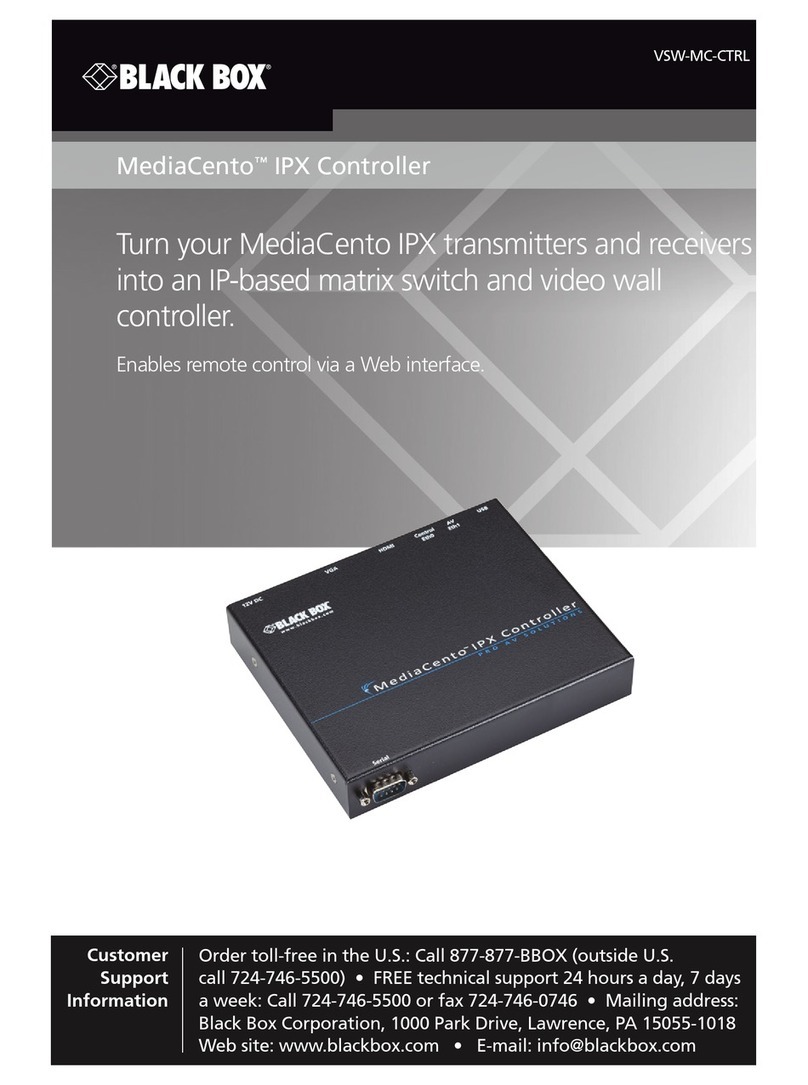
Black Box
Black Box VSW-MC-CTRL MediaCento IPX Controller User manual
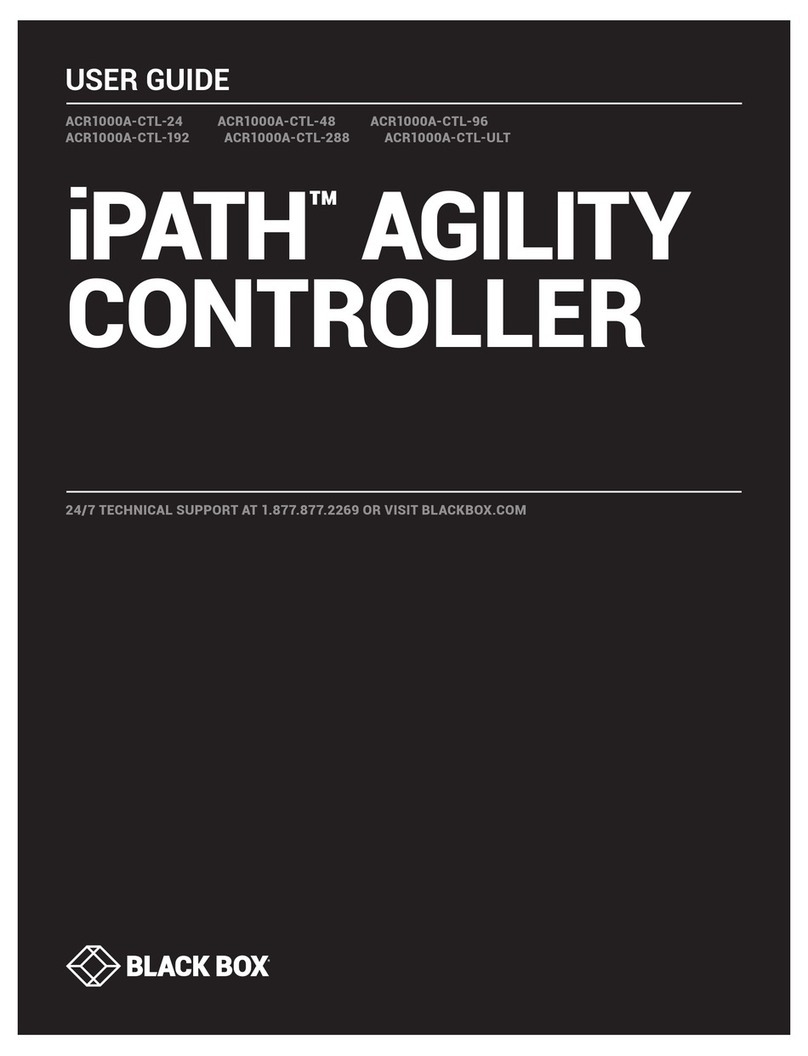
Black Box
Black Box iPATH ACR1000A-CTL-24 User manual
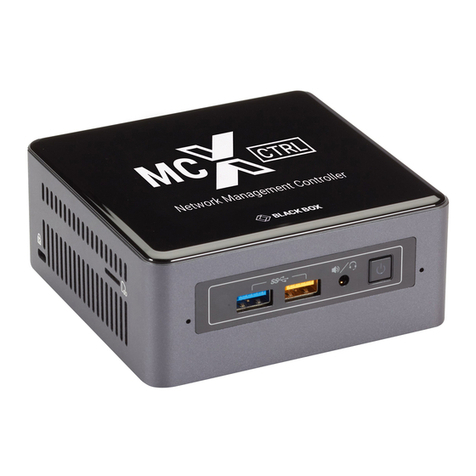
Black Box
Black Box MCX-G2-CONTROL-24 User manual
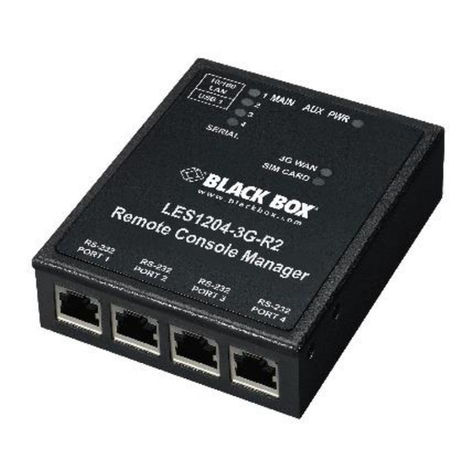
Black Box
Black Box LES1204A-3G-R2 User manual
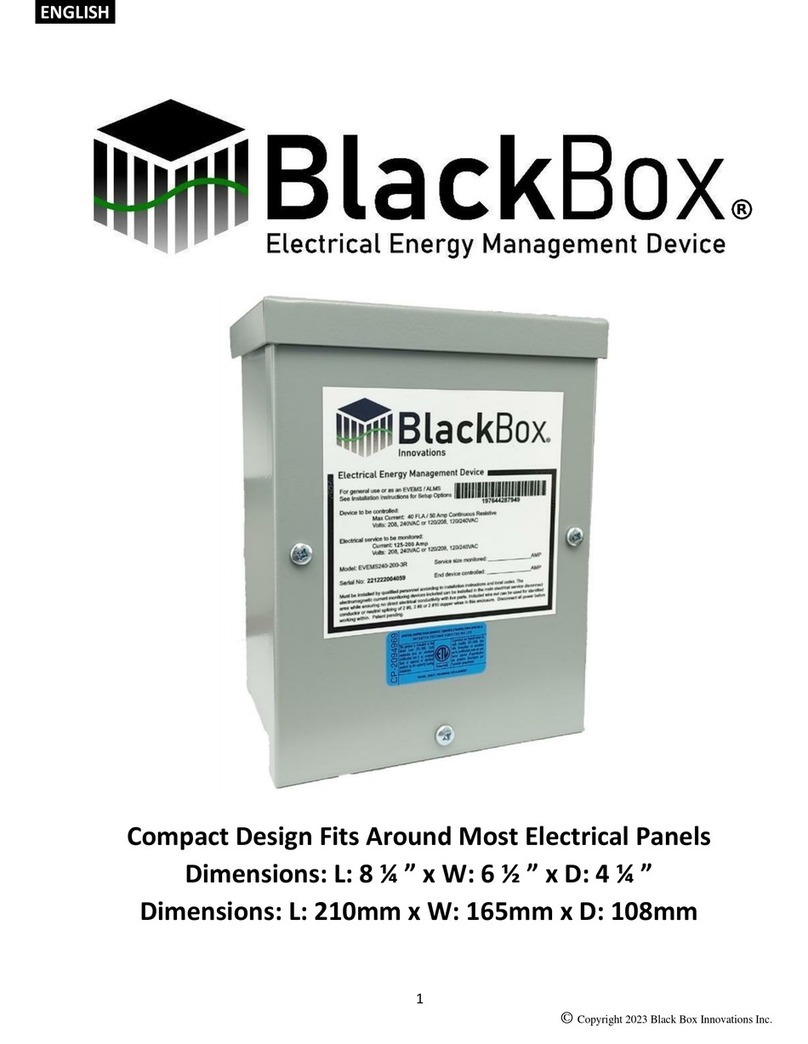
Black Box
Black Box EVEMS240-100-3R User manual

Black Box
Black Box BOXILLA BXAMGR User manual
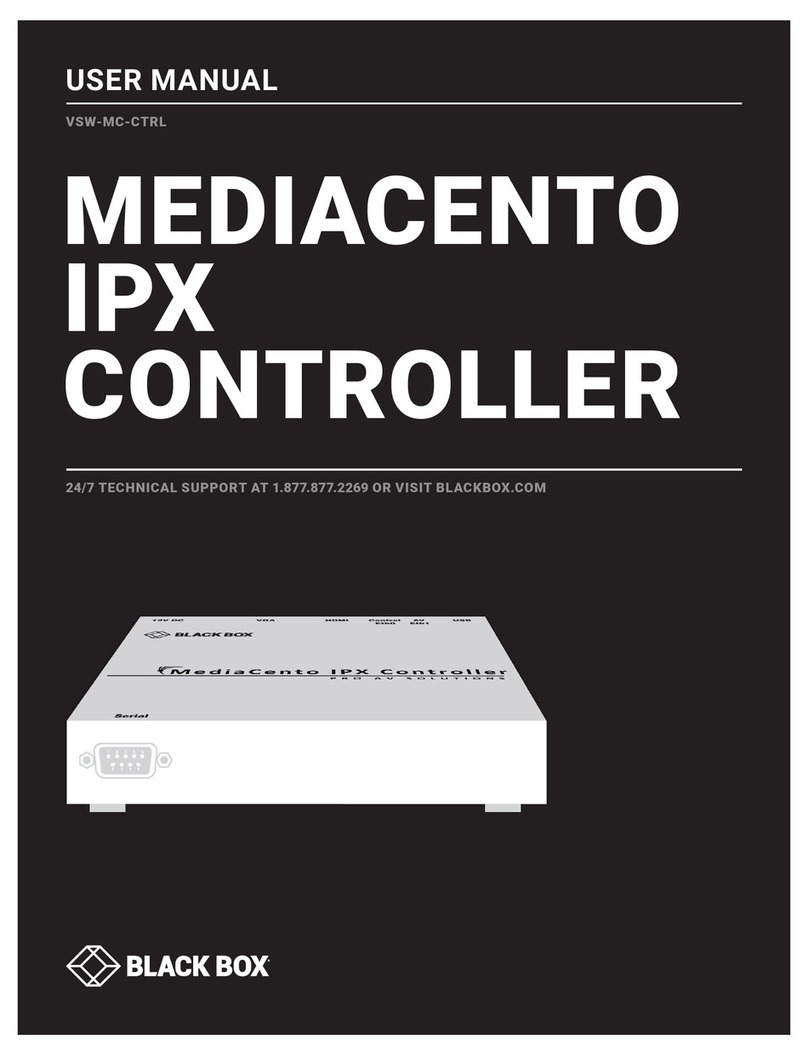
Black Box
Black Box MEDIACENTO VSW-MC-CTRL User manual

Black Box
Black Box VSC-VPLEX4 User manual
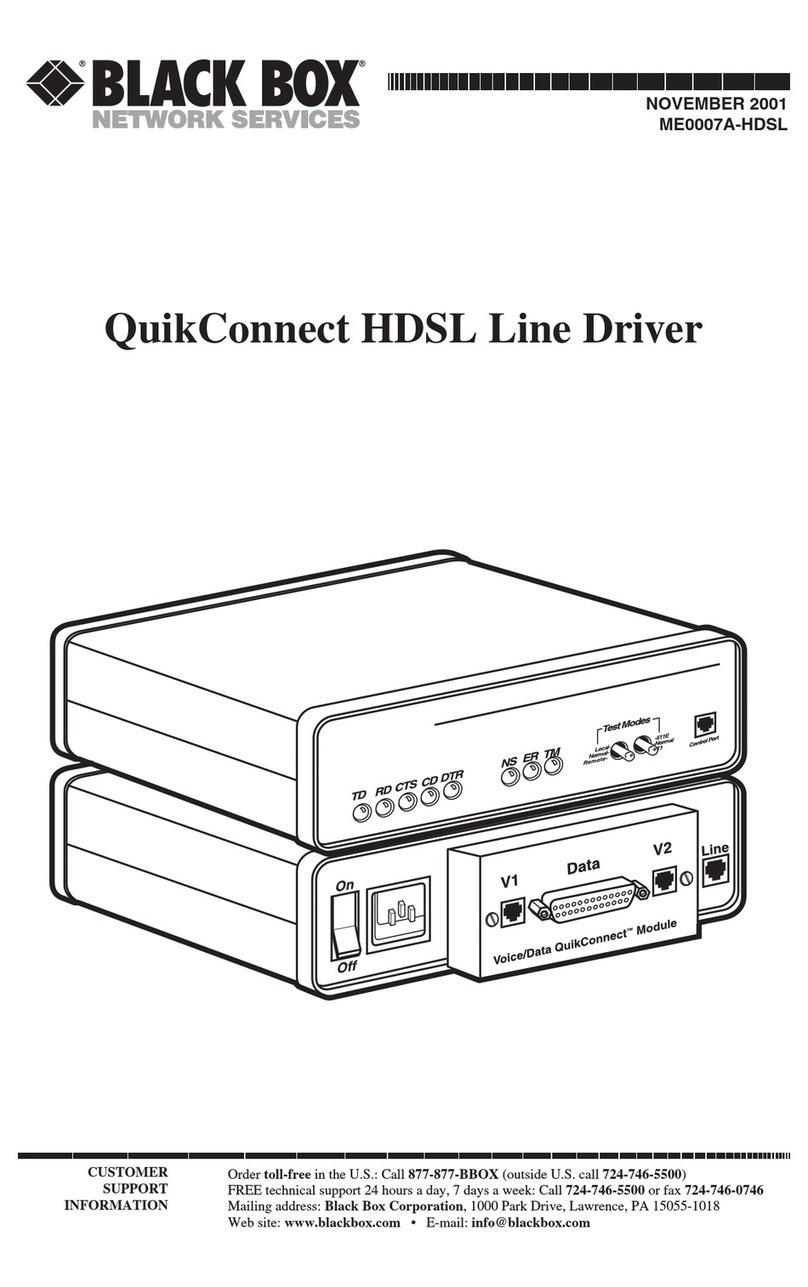
Black Box
Black Box QuikConnect ME0007A-HDSL User manual

Black Box
Black Box iPATH ACR1000A-CTL-24 User manual
